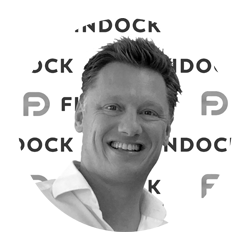(Originally posted by Salesforce.org.)
We see it around us and heard it loud and clear at Dreamforce ‘19: a customer revolution is upon us. Connected, intelligent, empowered, engaged and global, today’s customers are also a new breed of donors.
A rapidly developing Financial Technology (FinTech) sector means donors are diversifying their payment behaviour and expecting more payment options to meet their preferences from Apple Pay to QR Codes. Accommodating donor’s preferred payment methods are fundamental to their experience with your organisation and a key part of your strategy.
“Technology has advanced so rapidly that a laptop computer today is 96% cheaper than a 1994 model and 1,000X better.” – Mark Perry, AEI.org.
The rapid development of computing power set the scene for a revolution in connectivity, from wired to mobile wireless, from data transfer speeds measured in bits per second to gigabits per second… from the “internet” to the “cloud.”
Today’s hyper-connected customers are a very different kind of donor. They have higher expectations for personalisation, ease-of-use, and are much more open to new ways of making contributions.
Time to embrace digital payments
Digitalisation has gone from being a strategy for enterprise organisations to a necessary adaptation to changing stakeholder requirements. Payments are enjoying a digital transformation with banks and financial institutions no longer being the sole custodians of the flow of money. Banks and institutions are certainly adapting, but there are more and more FinTech players coming into the picture. That’s part of the beauty of digitalisation: it opens the door to completely new ideas and business models. Governments and regulatory agencies are also adjusting rules to accommodate new technology and keep users protected.
In the payment landscape, we see the same level of digitalisation. Long gone are the days of banks and financial institutions ruling cash flow. Banks and institutions are certainly adapting, but there are more and more FinTech players coming into the picture. That’s part of the beauty of digitalisation: not only does it offer a way to simplify traditional ways of working, it opens the door to completely new ideas and business models. Governments and regulatory agencies are also adjusting rules to accommodate new technology and keep users protected.
Connectivity and personalisation rule the day
Today we have smartphones, smartwatches and even smart buildings that have completely changed how we interact with many different elements of our lives from how to communicate to how we interact with organisations. People expect personalised digital experiences. It is hard to overstate the importance of connectivity in our lives. Being mobile and connected is taken as a given, while the Internet of Things is impacting everything in our daily lives.
Mobile applications and cloud-based services are cornerstones of new payment solutions. Working together with partners and providers to build end-to-end solutions like Salesforce Customer 360 help us keep up with rapid change while enabling personalized experiences.
How WWF Netherlands’ is embracing new FinTech
Things have changed a lot since the early days of WWF, Founded in 1961, the goal was clear: raise money to save and protect animals on the verge of extinction.
“Now, almost 60 years later, the challenges WWF and us as human beings faces are way more complex,” says Paul Zevenboom, Head of Digital & Data at WWF Netherlands.
“Economies have drastically changed and the human population has more than doubled in the meantime, from 3 billion to over 7 billion today. That means more food, more farming, and less space for animals. With climate change added to that, we face a completely different paradigm. As a nonprofit organization, we have to be able to adapt fast and be relevant with maximum impact.”
WWF’s unique way of working combines building bridges between governments, civil society and business to develop solutions at the scale of the challenges we all face. No one person or organization can do it alone.
WWF Netherlands had to rethink their strategy to address the speed at which the world is changing. The digital transformation of WWF Netherlands started about two and a half years ago.
“Systems and data management are important,” explains Paul. “But ultimately it comes down to figuring out what we can do better with our communication, relationships, and the whole relationship journey, to help our target groups and individuals be able to explain our story themselves. WWF must be relevant to everyone, regardless of age, areas of interest or method of contribution. It’s all about you and your role in nature.”
To make this possible, WWF Netherlands overhauled its digital and data infrastructure by partnering with Salesforce and FinDock. “The CRM data is really important,” notes Paul. “If we are telling targeted stories, we need to be spot on with our accuracy and really hit donors in the heart to inspire them to become part of the solution.”
When building their new infrastructure, they wanted a solution that is modular, allowing them to be adaptable and scale easily in functionality when needed. Salesforce met all these requirements.
“We are in a good place now with FinDock,” adds Paul. “We have implemented all the payment options we had before, and now we are working together with FinDock on new payment methods like adding Tikkie QR, a peer-to-peer mobile payment method popular in the Netherlands, to Acceptgiro, our traditional mail-based fundraising form.”
“People need to be able to make a contribution in their own personal way. This makes fundraising much more complex, but it also creates a lot of potential and creativity in solutions for our end users. That is why you need a solid digital and data platform.”
“The rate of change will absolutely continue to accelerate in the coming years,” says Paul. “We need to quickly enable new ways to get people engaged. A new mobile app could launch next month and be a huge hit. We need to be able to react to that, explore options and be ready to add it to our fundraising options.”
New innovations offer new opportunities
The good news is that there are really strong solutions out there and a lot of well-designed payment services coming online. Every new FinTech innovation is an opportunity for nonprofits. It gives you the chance to reach donors in new ways and build strong connections.

Bas Visser
CEO & Founder
Bas Visser is Founder & CEO of FinDock. He and his team are passionate about making Salesforce CRM accessible for nonprofits of any size and optimizing the donation payment process. To stay relevant in a fast changing consumer world, Bas believes that every organisation should build a Customer Payment Management strategy.
